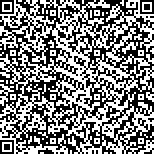| The Chinese species of the Tribe Fruticuliferae of the Malacocarpic Sargassum are reviewed. This tribe is characterized by species with smooth receptacles arranged in bristly (squarrose) cymes, that are pedicellate, but with both axes and branches merging with receptacular tissue. Of the ten species assigned by J. Agardh to this group, Setchell (1936) accepted only two and transfered Sargassum polyporum Montagne to the Tribe. This is a very special Sargassum with spinous branches and very crowded leaves that are mostly pinnatifid, Its type specimen was collected by Gaudichaud at Macao during the Voyage of La Bonite. Montagne (1842) described but did not illustrate this species, which is deposited in the herbarium of Montagne (Paris). According to Setchell (1936) it seems to be an upper branch, or branchlets, of a mature plant, and he did not find anything like a well-developed inflorescence and did not investigate its sex. Our specimens seem to agree with the description of Grunow (1916) and figures of Setchell (1936), though our specimens have no vesicles. According to the description of Grunow, the vesicles of the type specimen are numerous, globular, 2 – 3 mm in diameter, muticous, and supported on a rather long and compressed stipe. According to our specimens collected at Xuwen, Guangdong Province, receptacles are often arranged cymosely on branchlets and are female. Grunow(1916) described the receptacles as racemosely dichotomous filiform and subtorulose and probably male. It seems that we must wait until we obtain some good specimens before we can settle the problem of the receptacles.
A new species, Sargassum longicaulis sp. nov., is reported. It is characterized by its very long main axes (to 6 cm), very long (to 21 cm) deeply pinnately divided primary leaves; its male receptacles forked two to three times, cymosely arranged without any sterile axes or sterile bases. It is related to Sargassum polyporum Montagne, differing in its smooth branches and very long basal leaves. |
